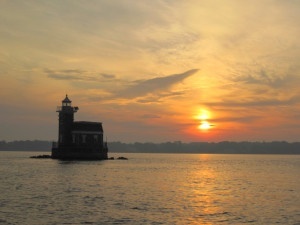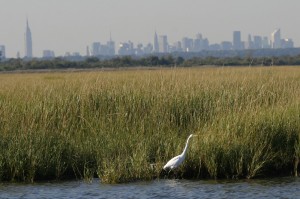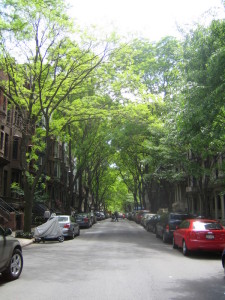We have much more to do and your continued support is needed now more than ever.
Climate Action Must Also Mean Adaptation

When Superstorm Sandy hit the region last year, sewage treatment plants along the coast, from New Jersey to Connecticut, could not manage the increased water outflows. The response? billions of gallons of untreated sewage was discharged straight into the Sound and the Atlantic. Needless to say, raw sewage is not exactly healthy for fish, wildlife, and the people that rely on these waters. Unless we take action to adapt to future climate impacts such as this, our restoration efforts to date will be undone.
Climate Change Hits the Atlantic Coast
On June 25th, President Obama announced his plan to lead the fight in addressing climate change. Among the many great initiatives he laid out, he conceited that regardless of how much carbon we cut today, the impacts of climate change will be felt for decades to come. National Wildlife Federation acknowledged this in Wildlife in a Warming World, released earlier this year. Among the impacts, scientists project that the global mean sea level could rise as much as 6.6 feet by the end of the century. Extreme weather events are also expected to increase in intensity, and wildlife from the Florida Keys to the Gulf of Maine are threatened by warming water, ocean acidification, and the constant threat of human development and pollution.
But climate change does not just bring doom and gloom. It brings opportunity. During his speech on his administration’s plan to address climate change, President Obama spoke about communities across the nation already adapting to the threats of climate change.
States and cities across the country are already taking it upon themselves to get ready. Miami Beach is hardening its water supply against seeping salt water. We’re partnering with the state of Florida to restore Florida’s natural clean water delivery system, the Everglades….
New York City is fortifying its 520 miles of coastline as an insurance policy against more frequent and costly storms. And what we’ve learned from Hurricane Sandy and other disasters is that we’ve got to build smarter, more resilient infrastructure that can protect our homes and businesses and withstand more powerful storms. That means stronger seawalls, natural barriers, hardened power grids, hardened water systems, hardened fuel supplies.
-President Obama, June 25th 2013
Climate Smart Communities

Annapolis, MD recognized that more intense storms will contribute to more frequent and severe instances of urban flooding. Their Stormwater Utility Fee can now be discounted for residential and community properties that install stormwater management structures on their property, including green roofs, rain gardens, and infiltration trenches. Natural structures such as these allow for infiltration of stormwater into the ground, preventing or slowing the flow of runoff into waterways where it may impact water quality and the health of fish and wildlife.

Investments Today Will Save Us Tomorrow
Less than a year after Hurricane Sandy, New York City released a progress report on its sustainability plan, PlaNYC. Among the many successes the report highlights, resilience against the impacts of Sandy were among the most significant. Despite $19 billion in damages, projects such as the Brooklyn Bridge Park suffered little to no damage thanks to design standards to manage against sea level rise and coastal flooding. Recovery and reconstruction efforts have since been completed with climate adaptation in mind. By restoring coastal parks and planting additional trees, the city also promises to provide benefits for wildlife as well.
The reality, as President Obama explained in his speech, is that the impacts of climate change are already occurring. We cannot simply wait for the next storm and hope for the best, especially if that means dumping raw sewage into our waterways and waiting for another day to clean it up. Taking action on climate cannot just mean cutting carbon. It must mean investing in adaptation efforts and green infrastructure today, so that people and wildlife can coexist tomorrow.





















